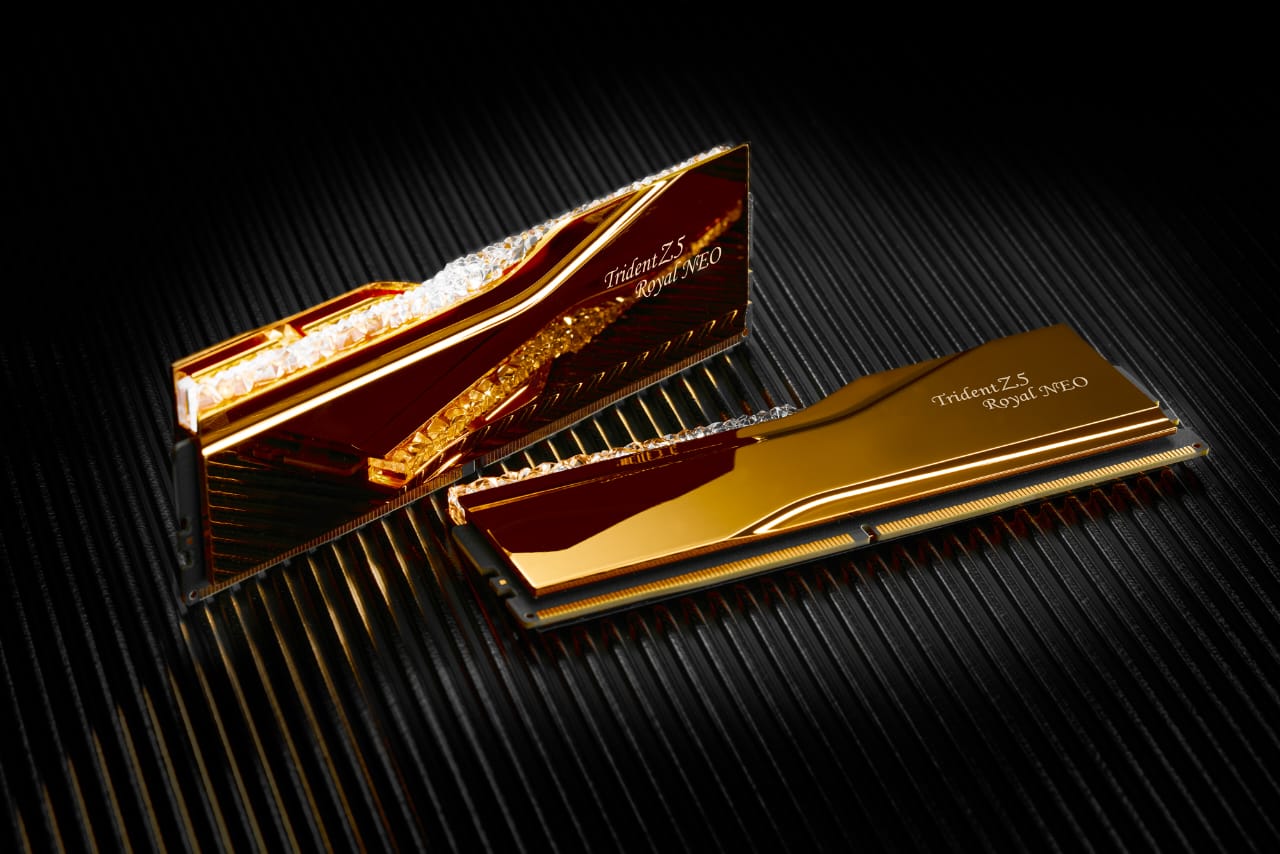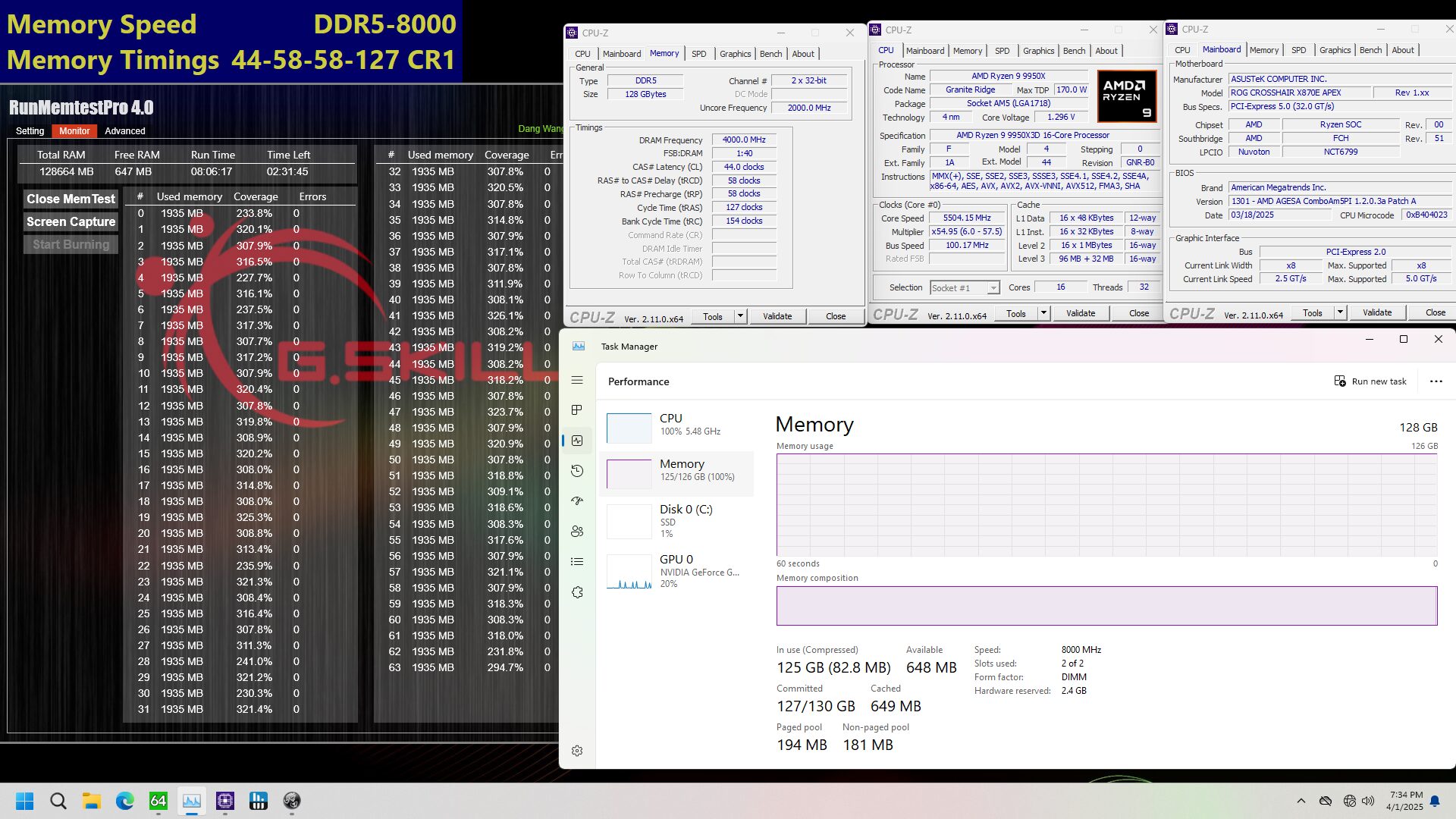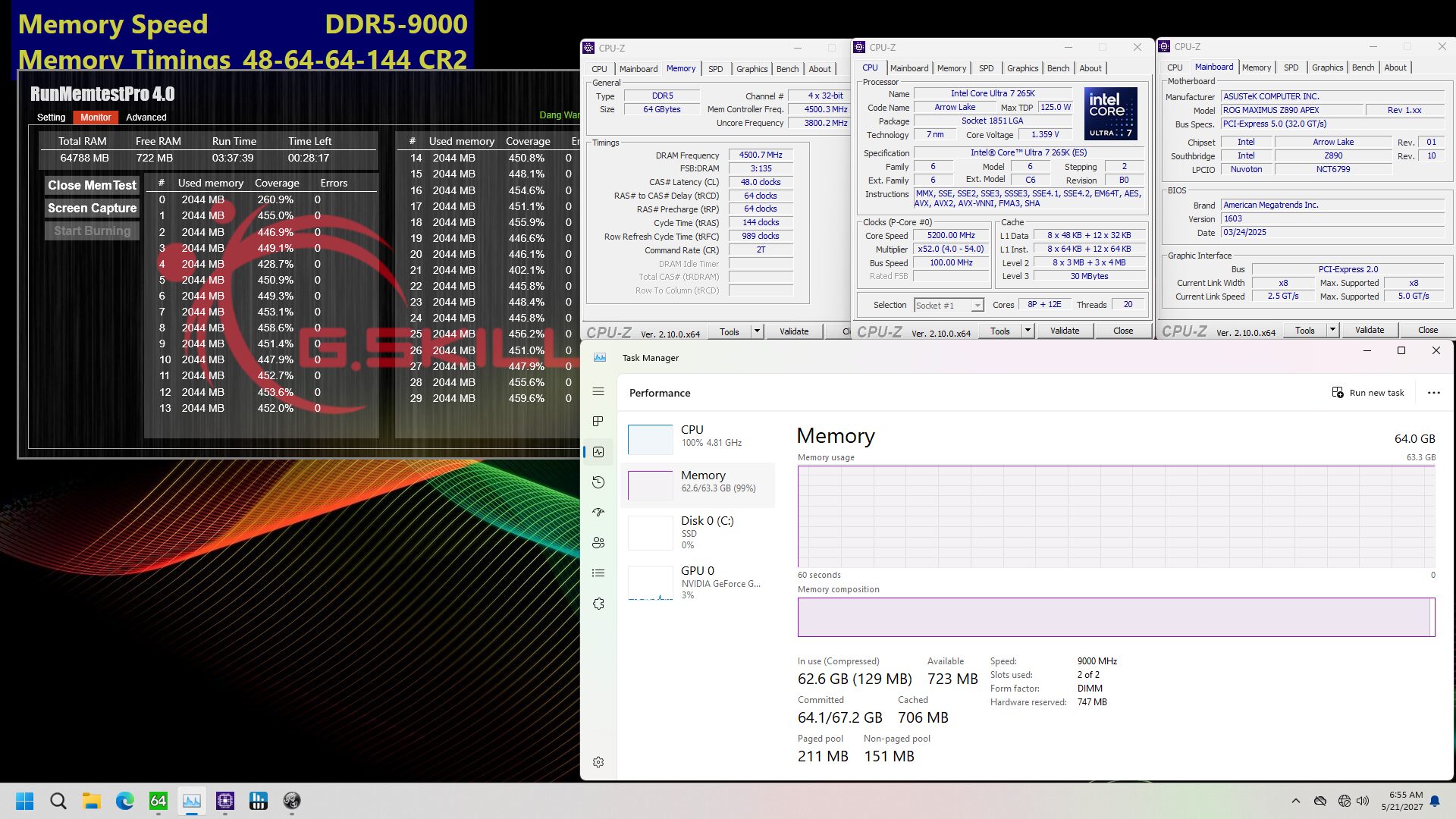G.Skill unveils first 128GB DDR5-8000 memory kit and ultra-fast DDR5-9000 64GB options

Today, G.Skill announced two new high-speed and high-capacity DDR5 memory kits to compete against the best RAM. Tailored toward enthusiasts under the Trident Z5 RGB and Z5 Royal Neo series, the latest offerings include what G.Skill claims is the world's first 128GB (64GBx2) memory kit running at DDR5-8000 speeds alongside a 64GB (32GBx2) DDR5-9000 offering for those prioritizing speed. There's no word on pricing and availability, though we expect more details to be unwrapped in the future.
128GB memory kits, typically configured as 64GBx2 for optimal speed, are widely available with speeds ranging from DDR5-5600 to DDR5-6000. G.Skill's latest Trident Z5 Royal Neo 64GB modules fill this gap in the market. They are advertised to hit DDR5-8000 speeds when overclocked.
The "Neo" designation indicates that this memory kit is designed and optimized for AMD's AM5 platform. Likewise, the 32GB DDR5-9000 modules are intended for Intel's Arrow Lake platform. However, the press release doesn't specify if these kits are CUDIMM-based.


G.Skill prepped a test bench featuring an AMD Ryzen 9 9950X on an Asus ROG Crosshair X870E Apex motherboard. The attached validation screenshot shows the 128GB Trident Z5 Royal kit running at DDR5-8000 CL44-58-58 speeds. If tighter timings are your priority, G.Skill recently introduced a 96GB DDR5-6400 kit with CL30 latency. However, they haven't explicitly stated support for AMD's EXPO technology.
Moving over to the Intel setup that was outfitted with the Core Ultra 7 265K and the Asus ROG Maximus Z890 Apex, the 64GB Trident Z5 RGB counterpart operates at an impressive 9000 MT/s with CL48-64-64 timings under MemtestPro 4.0. Intel's Arrow Lake processors officially support DDR5-5600 for standard DIMMs and DDR5-6400 for CUDIMM. Anything above that is out of JEDEC specifications and might require some tuning to ensure stability.
Likewise, Raphael and Granite Ridge work best at DDR5-6000 and DDR5-6400 speeds, respectively. Achieving DDR5-8000 on AM5 typically requires a 1:2 ratio, with the UCLK running at half the MCLK frequency. Your mileage may vary depending on your motherboard and CPU's memory controller, but these are impressive results. When purchasing high-end kits, ensure your motherboard is on the Qualified Vendor List of your RAM kit for compatibility. Keeping your BIOS up to date can also enhance stability.
Get Tom's Hardware's best news and in-depth reviews, straight to your inbox.

Hassam Nasir is a die-hard hardware enthusiast with years of experience as a tech editor and writer, focusing on detailed CPU comparisons and general hardware news. When he’s not working, you’ll find him bending tubes for his ever-evolving custom water-loop gaming rig or benchmarking the latest CPUs and GPUs just for fun.
-
SonoraTechnical Ryzen R9-9950X3D and Radeon 9070XT w/ 128GB of DDR5-8000 on a mITX board might be impressive.Reply -
bentwookie Read latency on the Royals is half that of writes for the simple fact that data wants off this ugly ram as quickly as possible.Reply -
thestryker The latency on the kits with 32Gb IC is higher than that of either 24Gb or 16Gb. I'm really curious if this is an early adopter thing or the downside of increased capacity. On the other hand these may be Micron IC which could explain the different latency profile. Making the jump to higher capacity would be nice, but not if the latency is going to be higher.Reply